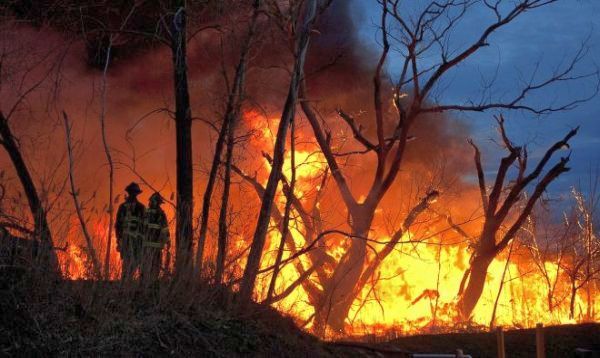Mexico City, Mexico – Schools are closed in Tepoztlán, Morelos due to the fact that the hills around the popular tourist destination have been burning for a week. "Tell the children to leave and protect themselves, with jackets and if possible, with face masks so that injuries are not more serious than usual," warns Morelos Education Secretary Rene Santoveña Arredondo.
In Puebla, firefighters extinguish a blaze on a hillside outside San Juan Atenco as a column of smoke rises from the neighboring city of Sedrán. With the National Forestry Commission of Mexico (Conafor) reporting 199 forest fires countrywide, last Sunday saw more blazes than any day in Mexico’s recorded history. Earlier this month, the Interior Secretariat declared a state of emergency in San Luis Potosí.
Rising temperatures, scarce rains, and strong winds have fanned small fires into conflagrations that have scorched national parks and swaths of farmland; closing schools and displacing communities. Around the country, wildfires continue to burn thousands of acres as federal and state agencies send firefighters from one fire to the next in a an attempt to save ecosystems, farmlands, and homes.
Prevalence
Conafor said last week that more than 5,800 fires have damaged 229,625 acres in Mexico this year. The Media has been quick to point out that the country has seen twice the amount of fires it did last year over the same period, and unless the flames abate, 2013 could make forest-fire history.
Mexico suffered one of its worst forest-fire seasons in 1998. Blazes around the country consumed more than 500,000 acres of grasslands and forests in Mexico - forcing mass evacuations. That year, Mexico asked the United States and Canada to lend a hand to save the country’s rain forests and nature reserves.
How They Work
All fires need three things: heat, oxygen and fuel. Wildfires are normally preceded by a heating period as high temperatures dry out grasses, bushes, trees, and other vegetation.
Although forest fires can occur naturally, 97 percent of wildfires in Mexico are the result of human activity, according to Conafor. Natural causes include lightning, volcanic eruptions, earthquakes, and meteorites.
Wildfires are classified into three types, ground fires, surface fires, and crown fires, depending on the level of the blaze. Crown fires, which are uncommon in Mexico, occur in the tops of trees and are the most dangerous as they can spread quickly, while surface fires burn on the surface of the ground and ground fires burn underground.
To prevent forest fires Conafor recommends that people avoid throwing their cigarettes on the ground, starting fires while camping, and practicing slash-and-burn agriculture. People who ignite or see a forest fire should immediately report it to the authorities.


